Results
-
£68.99
Celtic Fantasy - Keiichi Kurokawa
"Celtic" is a widely used term. Its history and culture expands to modern day Spain, Portugal, and North America.However, in this piece, I have based my music on the typical "Celtic" areas of Ireland and Scotland.The Bagpipe drone at the beginning reappears several times.After the introduction, the music transitions to an Irish Reel, The Wind That Shakes The Barley. Reel is a fast tempo dance, often in 4/4 or 2/2 time.Next is the Scottish folksong Auld Lang Syne, known as "Hotaru no Hikari" in Japan.The third movement is called Scotland the Brave. It is often performed by military bagpipe ensembles. Once air is blown into the bag, there is a constant reservoir of sound for Great Highland Bagpipes.A Part (advanced) is a grade 2.5-3 in American grading system. B Part (beginner) is 1-1.5.B Part is accessible for elementary school and junior high school beginning band students in Japan. However, the drone-sounding sections require a certain technique to hold the sound steady.It is my sincere desire that beginning musicians understand the importance of fundamentals through performing good music.Keiichi Kurokawa
Estimated dispatch 7-14 working days
-
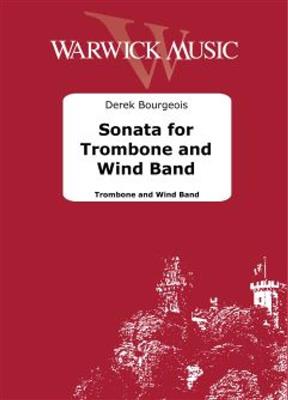 £75.00
£75.00Sonata - Derek Bourgeois
This work, composed in 1998, was commissioned by the American trombonist Don Lucas as a work for trombone and piano and first performed by him in Birmingham on 19th May 2000. Subsequently, I arranged the music for both solo trombone and brass band and solo trombone and wind band so that it now exists in three formats. The first movement, in B flat major, is brisk and energetic, and is cast in sonata form. The second subject is gentler and more lyrical. The second movement, a scherzo in C major, is the most complex of the four. Basically the structure is a rond. For a long time the music remains in the opening 5/8 time until a new theme introduces more broken rhythms in a more jazzy idiom. After a return of the opening theme the following episode is more tonally ambiguous. Finally, the main theme returns to round off the movement. The third movement, a lyrical adagio, is really one long extended melodic flow. The harmonies are lush and the textures simple and direct. The tonal center is A minor, but the music meanders through so many keys, that this key centre is heavily disguised. The finale is a fiery affair. G minor is really its home key, but throughout the movement the music moves about a lot and the second subject is first heard in A flat minor. The movement's underlying sonata structure is masked not only by its loose tonality but also by its frequently changing time signatures. Like the first movement the second subject is more lyrical in nature and for a while it seems that the music will end peacefully, but a final flurry heralds a triple forte unison on the home note of the first movement - B flat. Derek Bourgeois
Estimated dispatch 7-14 working days
-
 £102.99
£102.99Move to the Groove - Peter Kleine Schaars
In this three-part piece, Peter Kleine Schaars uses the initials of the German concert band association otherwise known as the Bund Deutscher Blasmusikverbnde (BDB). With 'B' equating to a B flat, various themes based on this sequence of notes follow one another: a funky fanfare, a comical waltz and a soulful set in a Mowtown style. With this much variety your audience will soon be in the groove!
Estimated dispatch 7-14 working days
-
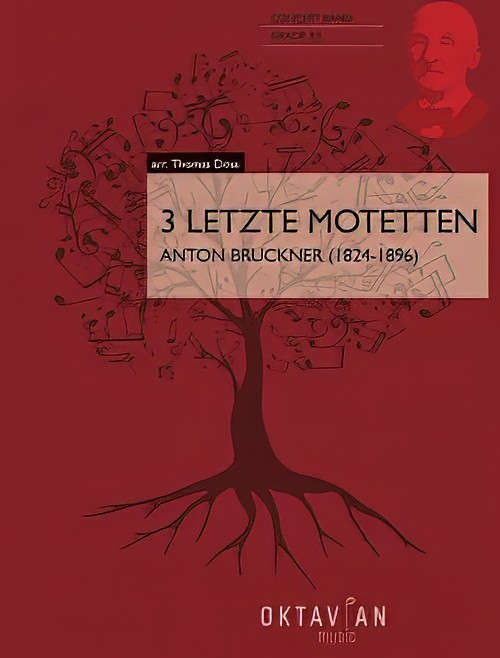 £123.20
£123.203 Letzte Motetten (Concert Band - Score and Parts) - Bruckner, Anton - Doss, Thomas
Anton Bruckner (b. 4.9.1824, Ansfelden, d. 11.10.1896, Vienna) didn't have it easy. Throughout his life, the Austrian composer was plagued by self-doubt. Anton Bruckner came from a simple, rural background. After the death of his father, he was accepted as a choirboy at the monastery of Sankt Florian in 1837. After several years as a school assistant and his own organ and piano studies, he first worked as organist in St. Florian, then from 1855 as cathedral organist in Linz. Introduced to music theory and instrumentation by Simon Sechter and Otto Kitzler, he discovered Richard Wagner as an artistic role model, whom he admired throughout his life and also visited several times in Bayreuth. In 1868 Anton Bruckner became professor of basso continuo, counterpoint and organ at the Vienna Conservatory; ten years later court organist; and in 1891 finally honorary doctor of the University of Vienna. He was considered an important organ virtuoso of his era, but had to wait a long time for recognition as a composer. It was not until Symphony No.7 in E major, composed between 1881 and 1883, with the famous Adagio written under the effects of Wagner's death, that he achieved the recognition he had hoped for, even if he was reluctant to accept it given his inclination towards scepticism and self-criticism. Anton Bruckner was a loner who did not want to follow a particular school or doctrine. He composed numerous sacred vocal works, such as his three masses, the Missa Solemnis in B flat minor (1854), the Te Deum (1881-84) and numerous motets. As a symphonic composer, he wrote a total of nine symphonies and many symphonic studies from 1863 onwards, tending to revise completed versions several times over. Bruckner's orchestral works were long considered unplayable, but in fact were merely exceptionally bold for the tonal language of their time, uniting traditions from Beethoven through Wagner to folk music, on the threshold between late Romanticism and Modernism. Anton Bruckner composed about 40 motets during his lifetime, the earliest a setting of Pange lingua around 1835, and the last, Vexilla regis, in 1892. Thomas Doss has compiled some of these motets in this volume for symphonic wind orchestra. These motets show many characteristics of personal expression, especially Bruckner's colourful harmony in the earlier works, which is in places aligned with Franz Schubert (changes between major and minor; and movements in thirds). Later works are characterised by many components which, in addition to the expanded stature of the movements, include above all a sense of the instrumentation as an outward phenomenon and the harmony as a compositional feature that works more internally. Some aspects of Bruckner's work are the result of his long period of study, which familiarised him not only with the tradition of his craft, but also gave him insights into the "modernity" of his time in such composers as Wagner, Liszt and Berlioz. From this developed his personal standpoint, which always pursues the connection between the old and the new.Duration: 14.00
Estimated dispatch 7-14 working days
-
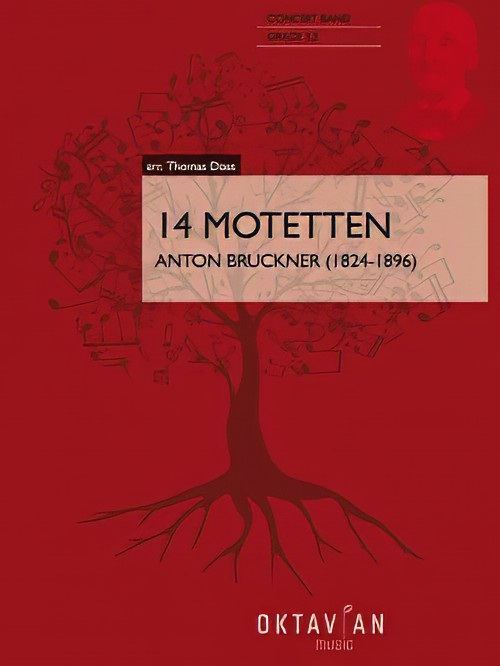 £256.00
£256.0014 Motetten (Concert Band - Score and Parts) - Bruckner, Anton - Doss, Thomas
Anton Bruckner (b. 4.9.1824, Ansfelden, d. 11.10.1896, Vienna) didn't have it easy. Throughout his life, the Austrian composer was plagued by self-doubt. Anton Bruckner came from a simple, rural background. After the death of his father, he was accepted as a choirboy at the monastery of Sankt Florian in 1837. After several years as a school assistant and his own organ and piano studies, he first worked as organist in St. Florian, then from 1855 as cathedral organist in Linz. Introduced to music theory and instrumentation by Simon Sechter and Otto Kitzler, he discovered Richard Wagner as an artistic role model, whom he admired throughout his life and also visited several times in Bayreuth. In 1868 Anton Bruckner became professor of basso continuo, counterpoint and organ at the Vienna Conservatory; ten years later court organist; and in 1891 finally honorary doctor of the University of Vienna. He was considered an important organ virtuoso of his era, but had to wait a long time for recognition as a composer. It was not until Symphony No.7 in E major, composed between 1881 and 1883, with the famous Adagio written under the effects of Wagner's death, that he achieved the recognition he had hoped for, even if he was reluctant to accept it given his inclination towards scepticism and self-criticism. Anton Bruckner was a loner who did not want to follow a particular school or doctrine. He composed numerous sacred vocal works, such as his three masses, the Missa Solemnis in B flat minor (1854), the Te Deum (1881-84) and numerous motets. As a symphonic composer, he wrote a total of nine symphonies and many symphonic studies from 1863 onwards, tending to revise completed versions several times over. Bruckner's orchestral works were long considered unplayable, but in fact were merely exceptionally bold for the tonal language of their time, uniting traditions from Beethoven through Wagner to folk music, on the threshold between late Romanticism and Modernism. Anton Bruckner composed about 40 motets during his lifetime, the earliest a setting of Pange lingua around 1835, and the last, Vexilla regis, in 1892. Thomas Doss has compiled some of these motets in this volume for symphonic wind orchestra. These motets show many characteristics of personal expression, especially Bruckner's colourful harmony in the earlier works, which is in places aligned with Franz Schubert (changes between major and minor; and movements in thirds). Later works are characterised by many components which, in addition to the expanded stature of the movements, include above all a sense of the instrumentation as an outward phenomenon and the harmony as a compositional feature that works more internally. Some aspects of Bruckner's work are the result of his long period of study, which familiarised him not only with the tradition of his craft, but also gave him insights into the modernity of his time in such composers as Wagner, Liszt and Berlioz. From this developed his personal standpoint, which always pursues the connection between the old and the new.Duration: 39.00
Estimated dispatch 7-14 working days
-
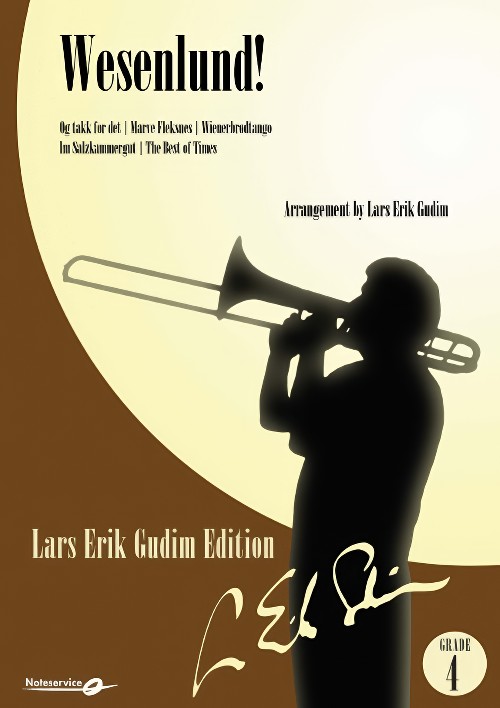 £140.00
£140.00Wesenlund! (Concert Band - Score and Parts) - Gudim, Lars Erik
Rolv Wesenlund (1936-2013) was an Norwegian actor, comedian, singer and record producer. He appeared in many musicals, movies and TV-series from mid 1960's to 2010. This instrumental arrangement presents five of the songs he was closely connected to: Ok takk for det (TV-series produced by The Norwegian Broadcasting Corporation in 1969); Marve Fleksnes (From the TV-series "Fleksnes fataliteter"); Wienerbr?dtango (From the Musical "B?r B?rson Jr."); Im Salzkammergut (From the Operetta "Summer i Tyrol"); The Best of Times (From the Musical "La Cage aux Folles"). Duration: 2.45
Estimated dispatch 7-14 working days
-
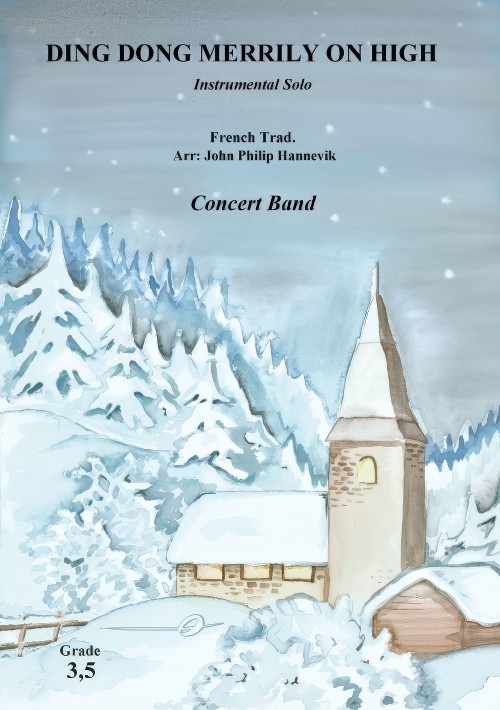 £91.00
£91.00Ding Dong Merrily on High (Vocal or Flexible Instrumental Solo with Concert Band - Score and Parts) - Hannevik, John Philip
This well know Christmas Carol has a French tune from the 16th century dance book Orch?sographie, written by Jehan Tabourot. The original title is "Le branle de l'Official". The lyrics were written by Englishman George Ratcliffe Woodward in 1924. Woodward took an interest in church bell ringing, which is easy to hear in his lyrics, and the arrangement also tries to portray this. The song is unusual in that the verse is sung in an old-style English, while the chorus is in latin, with it's signature melisma on the word "Gloria". Solo Options: Solo C (T.C.), Solo C (B.C.), Solo Bb (T.C.), Solo Bb (B.C.), Solo Eb or Solo F. Duration: 2.15
Estimated dispatch 7-14 working days
-
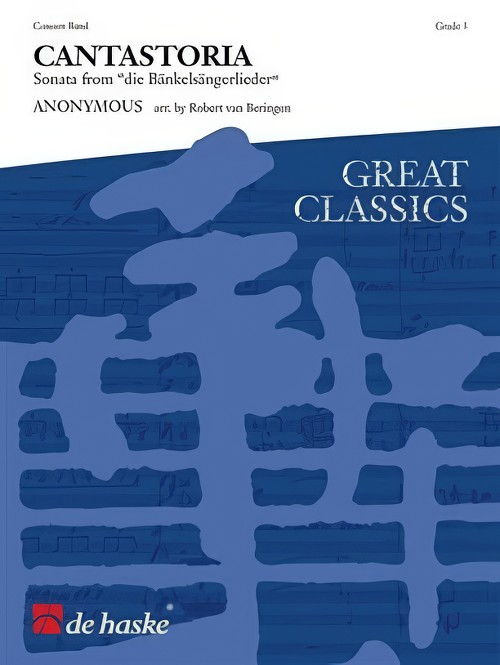 £84.99
£84.99Cantastoria (Sonata from die Bankelsangerlieder) (Concert Band - Score and Parts) - Beringen, Robert van
A cantastoria or B?nkels?nger - German for busker - was a travelling musician who made music in streets and squares, together with his colleagues. Die B?nkels?ngerlieder (buskers songs) originally stem from the seventeenth century. Robert van Beringen, who is known for his attractive arrangements of classical melodies, created a colourful transcription for wind band based on this characteristic music. Duration: 3.00
Estimated dispatch 7-14 working days
-
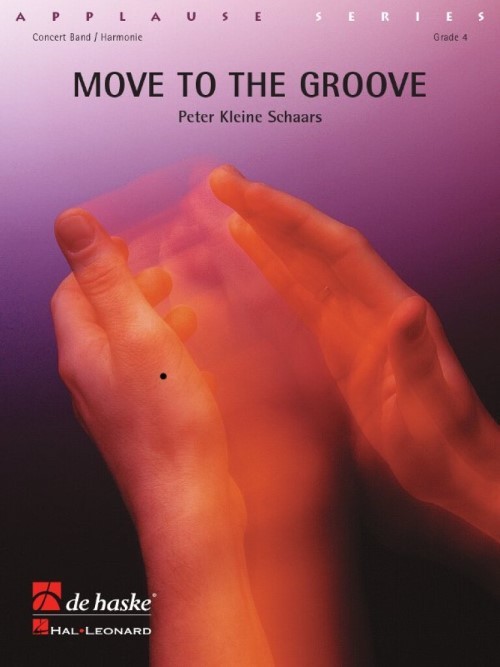 £102.99
£102.99Move to the Groove (Concert Band - Score and Parts) - Schaars, Peter Kleine
In this three-part piece, Peter Kleine Schaars uses the initials of the German concert band association otherwise known as the Bund Deutscher Blasmusikverbande (BDB). With 'B' equating to a B flat, various themes based on this sequence of notes follow one another: a funky fanfare, a comical waltz and a soulful set in a Mowtown style. With this much variety your audience will soon be in the groove!Duration: 4:30
Estimated dispatch 7-14 working days
-
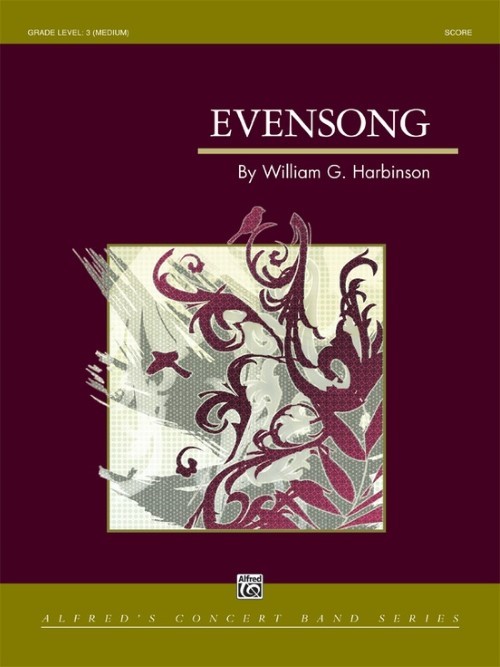 £64.95
£64.95Evensong (Concert Band - Score and Parts) - Harbinson, William G.
Evensong is a beautiful ballad in standard song (ABA) form with a brief coda. The lyric nature of the composition offers opportunities to develop the ensemble's expressive playing with concentration on tone, intonation, balance, and phrasing. The contrasting B section features the woodwind voices and moves through several non-traditional key areas (B, D, C major) before returning to the tonic key (E-flat major) for a varied restatement of the A section. The coda provides a quiet and peaceful conclusion.Duration: 4.30
Estimated dispatch 7-14 working days
